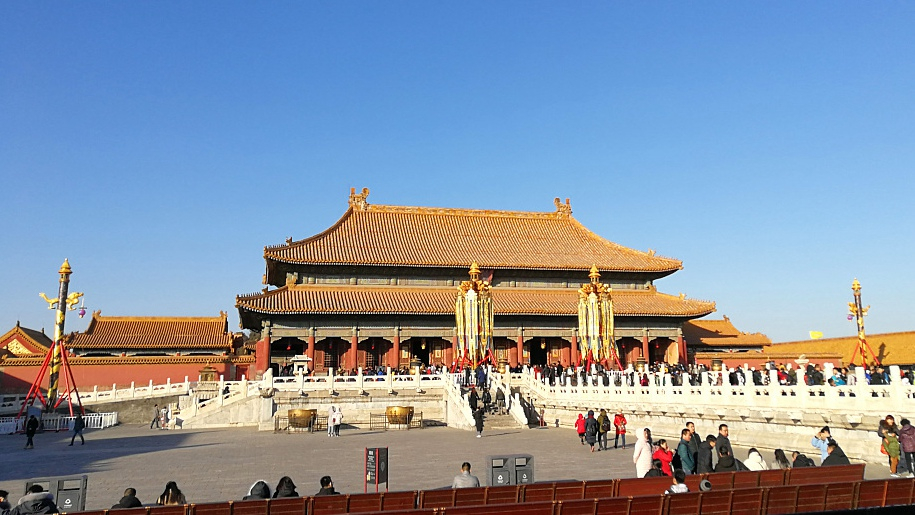
Culture China
17:02, 28-Jan-2019
Decoding imperial banquets on Chinese New Year
Updated
19:47, 28-Jan-2019
By Shen Li
01:44

Dinners on Chinese New Year’s Eve are the most important get-togethers for Chinese families, and it was no different for the emperor. We stay in the Palace Museum to find out what imperial banquets were like during the New Year's celebrations.
The New Year's Eve dinner was a rare reunion for the emperor during the Qing Dynasty (1644 - 1912) with his family and concubines plus selected children.
The emperor usually dined alone, and only ate with his concubines during important festivals like the Chinese New Year.
Unlike traditional family reunion dinners, which happen on New Year's Eve, the imperial banquets took place on the first day of the Lunar New Year, with a special set of rituals.
Han Qian, a researcher from the Palace Museum, said that the imperial banquet consists of two parts: the emperor would first eat with his concubines in the morning and then dine with close relatives and high-ranking aristocracy in the afternoon.
There were also strict rules about what to eat and what kind of tableware can be used.
The emperor would use golden tableware with dragon prints and could enjoy a total of 108 dishes.
The empress would use a different kind of golden tableware, with 64 dishes, while other concubines were only served 32 dishes.
"During the new year holiday, while making dumplings, people would wrap coins in them. It was believed that the person who ate those special dumplings would have good luck in the new year. The imperial family also honored this tradition," said Han.
Imperial cuisines are part of the ongoing New Year-themed exhibition at the Palace Museum.
Curators promise that the museum will not only present visitors with antique collections but also allow them to immerse themselves in the cultural atmosphere of ancient China.
(Head Image: As the Spring Festival approaches, New Year's decoration are prepared in the Palace Museum in Beijing, January 25, 2019. /VCG Photo)

SITEMAP
Copyright © 2018 CGTN. Beijing ICP prepared NO.16065310-3
Copyright © 2018 CGTN. Beijing ICP prepared NO.16065310-3